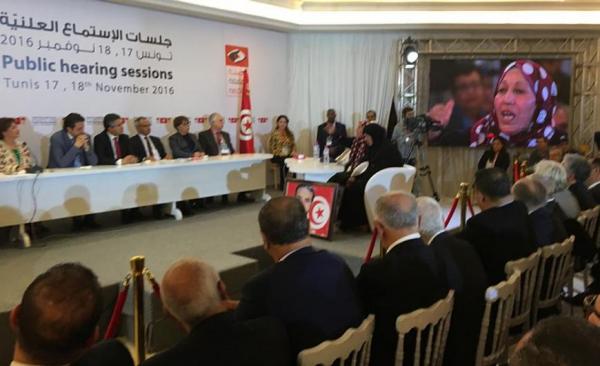Ministry of Interior
The buildings of the Ministry of Interior are situated in a critical central area in the capital, which almost serves as a geographical and administrative centre. Built at the end of the century, the numerous buildings cover a vast area. The main two buildings, however, were constructed when the social protests increased and the national movement rose. Their locations were chosen near the port. The first large grey building was completed in 1955 and was used as a security department. After independence, they were used by the Ministry of Interior. The white building, at the junction of Bourguiba and Hussein Bouziane streets, as well as the adjacent building behind it, contained the information and intelligence services, the state security or land integrity.
Throughout the rule of Bourguiba and later Ben Ali, interrogations with opponents of all walks of life, regardless of their accusations, were conducted in these two buildings where offices were dedicated for torture. Whenever there were large-scale arrests, detainees were kept in cells occupying the corridors. This was a main reason why protesters on 14 January 2011 headed towards the place, calling for ending the involvement of the Ministry of Interior in it. But when people increasingly called for opening the place to the public, including the turning of the building into a site of memory, new authorities opened it once or twice for media purposes. Only after they remodelled the place and removed all traces and stains of blood and wall scribbling, the place opened for public. Everyone knows that the last person to be released from this place was the leftist opponent Hama Hammami, who was out on the day of the revolution. It is not known, however, if these cells are still functioning as before.
Describing this site of conscience, El-Sadiq ibn Muhanni said in his book ‘The Tomato Thief or Imprisonment Prolonged My Life’: ‘[They] throw you inside that building, near the grey building at the junction of the Big Road and Hussein Bouziane St. In there, you will be standing with your daughter on January 14, 2011. You will be standing amongst thousands of other countrymen, chanting together in an unexpected challenge, and calling for the end of all forms of oppression, injustice, arbitrariness and corruption.’ Then everyone will burst into chanting Hallelujah, giving the rein to their joy by arresting you while you hear them count the booties and congratulate one another on the big victory.’ - Saras Publishing, 3rd Ed, Tunisia 2017. p. 21.
